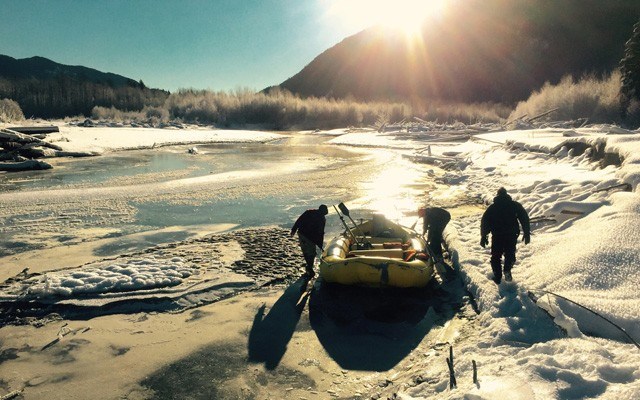It was a milestone year for the Brackendale Winter Eagle Festival, but the celebratory mood was dampened somewhat by the lowest tally of eagles in the count's 30-year history.
Groups of volunteer birdwatchers divided a 40-kilometre area of the Brackendale Eagles Provincial Park and the Squamish River on Sunday, Jan. 3, recording a total of just 411 eagles. That's down from 641 eagles last year, when efforts were hindered by blizzard-like conditions, and the previous historic low of 627 eagles in 2011. The highest tally ever recorded was in 1994, when 3,769 eagles were spotted in one day.
"We've been out there almost everyday and we've noticed that this year the last run of chum (salmon) particularly was very low," said Squamish Eagle Watch Program (EWP) coordinator Judith Knapp. "The eagles really rely on that last run to get through the winter and this year we saw very few of the chum even in the small spawning channels around the Mamquam area."
Recent weather conditions in the Squamish River Valley have also had a major impact on the region's wintering bald eagles, said Glenne Campbell, a count organizer with the festival.
"I think the No. 1 thing is the weather," she said. "We had a very hot and dry summer followed by a couple huge rain events in the late fall after the salmon had spawned. So any salmon carcasses that were left on the river banks were either washed out or washed into back eddies and channels."
Heavy early season snow proved an additional challenge, Knapp said, hampering visibility for eagles scouring the riverbanks for salmon carcasses.
"A lack of food is the real reason we don't see as many eagles where they normally are; they had to go somewhere else to look for food," she added.
Knapp is also concerned by the lack of juvenile eagles spotted in 2016 — only 149 — particularly after last year's count when volunteers recorded "far more" young eagles than expected.
"It's a good number but you'd think if two adults have two or three chicks a year over a 30-year lifespan, then there would be a whole lot more juveniles," she said. "I'm thinking that they're not getting enough food in those first five years and not making it through the winter."
Even with shrinking eagle numbers, the EWP, a volunteer initiative that educates guests on ethical eagle viewing, hasn't waned in popularity in its 20th year.
"We've been pretty busy almost everyday with Eagle Watch this season," said Knapp, who along with festival founder Thor Froslev, regularly meets with tour groups and students from across the region and beyond. "We've probably seen over 2,000 students (this season)."
Still, Knapp wonders if the stream of visitors— which have come from as far away as India and Iran this year — will dry up if Brackendale continues to see its wintering eagle population dwindle.
"(Visitors) come to Canada and expect to see wildlife in action," she said. "If (the low eagle count) gets back to China, Japan and to some of the Asian countries that bring lots of visitors here, it could affect whether or not they do come up to Squamish."
The annual festival hosted by the Brackendale Art Gallery is a big draw for the community, with events and activities planned throughout the month of January. This year's program also includes The Natural World Lecture Series, featuring informative presentations every Sunday by noted wildlife biologists, ecologists and archeologists. Next up is a talk on Jan. 10 at 8 p.m. by paleontologist Dr. Brian Chatterton called Past Lives: Trilobites, Dinosaurs and Birds. Entry is by donation.
For the full schedule, visit www.brackendaleartgallery.com.




